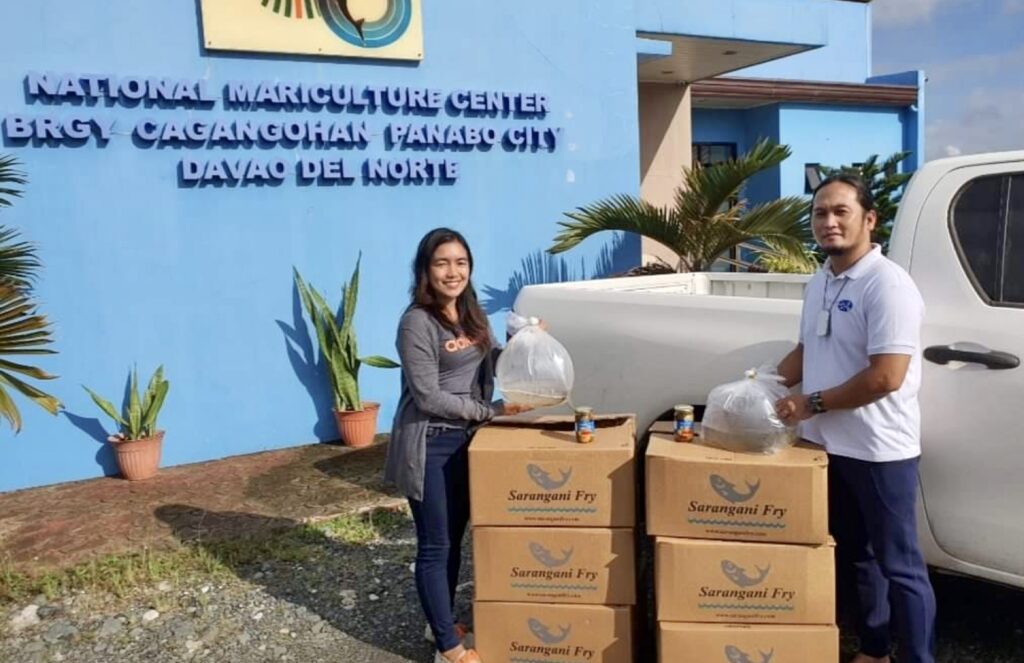Text by Henrylito D. Tacio
Photos courtesy of FHI
Despite the economic crunch brought about by the coronavirus disease 2019 (COVID-19), the Alsons Group of Companies is steadily helping Filipino fishers in providing reliable fry of bangus in areas where the national fish is being raised.
Early this month, the group – through its Finfish Hatcheries, Inc. (FHI) – donated one million fries of bangus to the National Mariculture Center (NMC) of the Bureau of Fisheries and Aquatic Resources (BFAR) in Panabo City.
The donation was part of the group’s commitment to helping the country’s mariculture industry, according to Rene B. Bocaya, FHI’s assistant vice-president for sales.
The donated bangus fry were stocked at NMC’s brackish water pond located in barangay San Pedro.
“The stock will be reared for 20-30 days until they attain the size of one inch and will be dispersed to some brackishwater fishpond operators in support of Fisherfolks Marine Fish Cage Livelihood Project,” said Jericardo Mondragon, BFAR-NMC chief.
The recipients of the fingerlings are small fisherfolk in Davao del Norte.
“The possible grower beneficiaries are very excited to receive their bangus fingerlings for them to culture up to table sizes,” Bocaya said.
All beneficiaries are already engaged in bangus production. “They are excited because the fingerlings are the most important input in the aquaculture system,” Bocaya explained.
The aforementioned BFAR project is under the collaboration with Land Bank of the Philippines, First Trust Bank, and the local government unit of Panabo at Panabo Mariculture Park.
“The project will contribute to the food security program of the government and is expected to produce some 104 metric tons of fresh bangus,” Mondragon said.

Mondragon, together with Karen Candilosas, senior agriculturist and head of the technical services department, were very pleased with the donation.
“The BFAR-NMC is very grateful to Alsons Group/Finfish Hatcheries Inc. for their continued support to the fishery industry and generously caring for our small fisherfolk,” Mondragon said in a letter sent to FHI.
Alex I. Alcantara, the FHI president, approved the donation.
This was not the first time FHI has been doing this. “We’ve donated many times already through BFAR,” Bocaya said.
According to Bocaya, FHI started working with BFAR on the fry dispersal program as early as 2008. “This was after the very strong Typhoon Emong,” he recalled.
The reason why FHI works mostly with BFAR in terms of fry donation is that “BFAR could readily identify the beneficiaries.”

